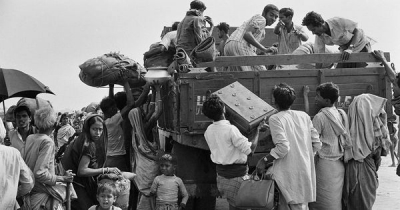
The borders of modern Bangladesh were established with the separation of Bengal and India in August 1947, when the region became East Pakistan as a part of the newly formed State of Pakistan following the end of British rule in the region. Proclamation of Bangladeshi Independence in March 1971 led to the nine-month long Bangladesh Liberation War, that culminated with East Pakistan emerging as the People’s Republic of Bangladesh.
After independence, the new state endured famine, natural disasters, and widespread poverty, as well as political turmoil and military coups. The restoration of democracy in 1991 has been followed by relative calm and rapid economic progress.
The exact origin of the word Bangla or Bengal is unknown. According to Mahabharata, Purana, Harivamsha Vanga was one of the adopted sons of King Vali who founded the Vanga Kingdom. The earliest reference to “Vangala” (Bôngal) has been traced in the Nesari plates (805 AD) of the south Indian ruler Rashtrakuta Govinda III, who invaded northern India in the 9th century, which speak of Dharmapala as the king of Vangala. The records of Rajendra Chola I of the Chola dynasty, who invaded Bengal in the 11th century, affirms Govinda Chandra as the ruler of Bengal. Shams-ud-din Ilyas Shah took the title “Shah-e-Bangalah” and united the whole region under one government for the first time.
The Vanga Kingdom (also known as Banga) was located in the eastern part of the Indian Subcontinent, comprising part of West Bengal, India and present-day modern Bangladesh. Vanga and Pundra were two dominant tribes in Bangladesh in ancient time.
Picture Credit : Google



